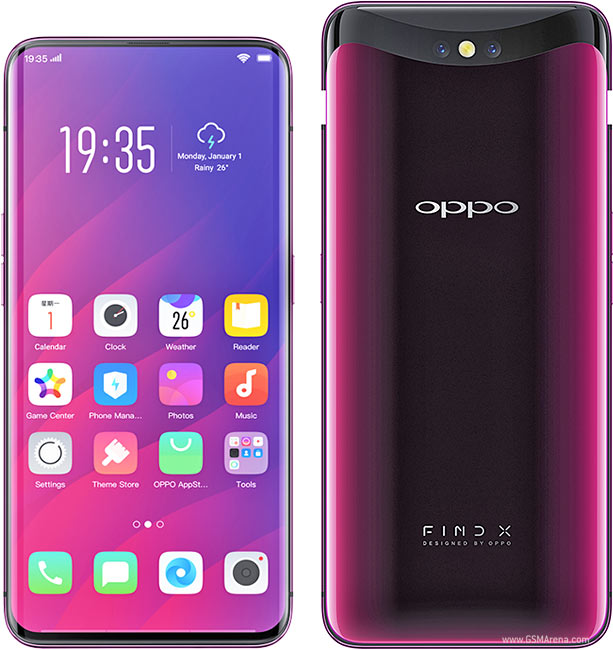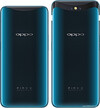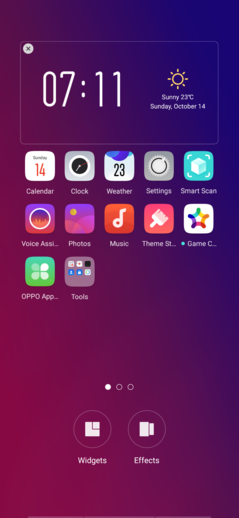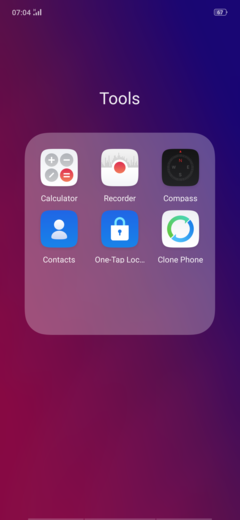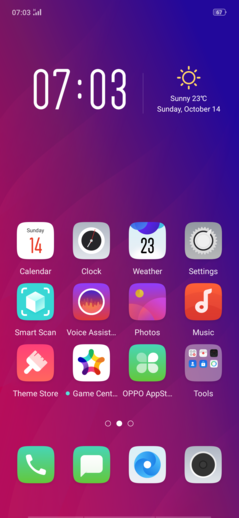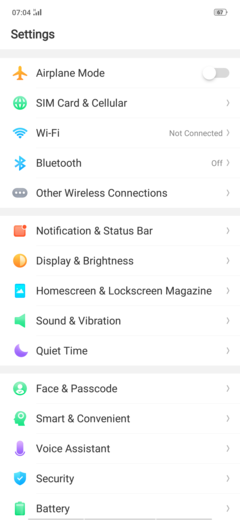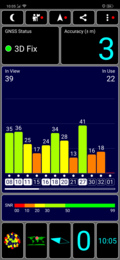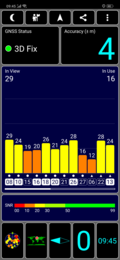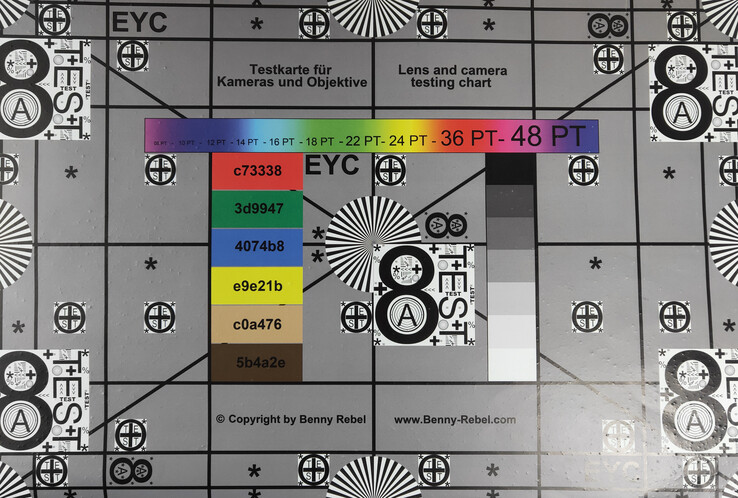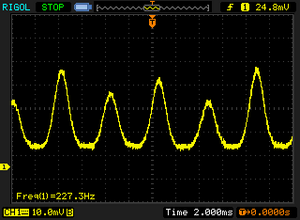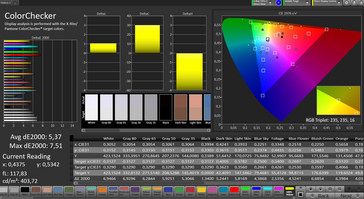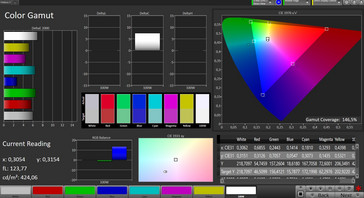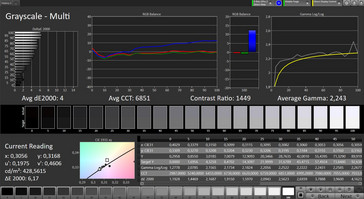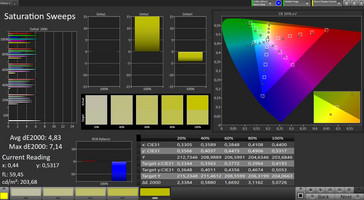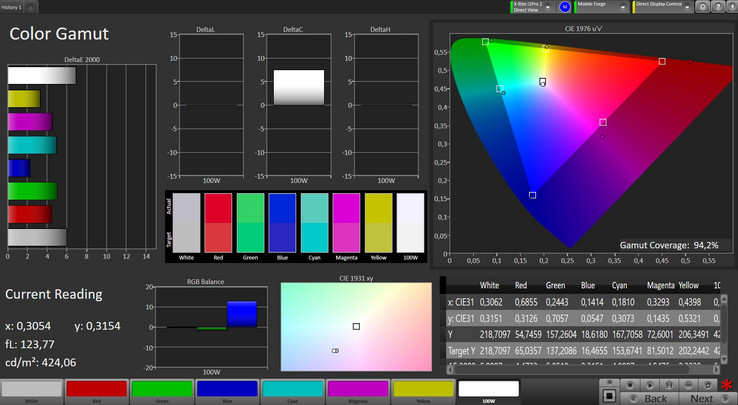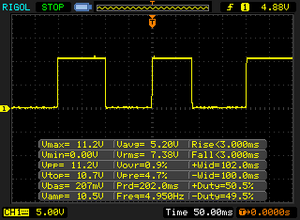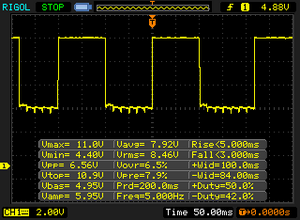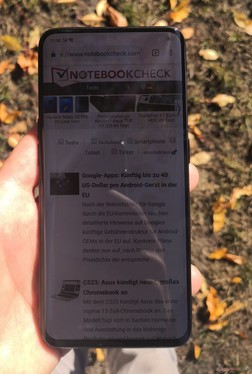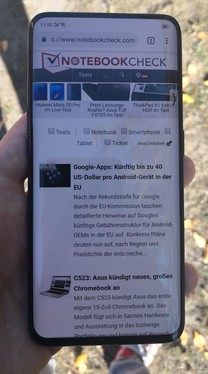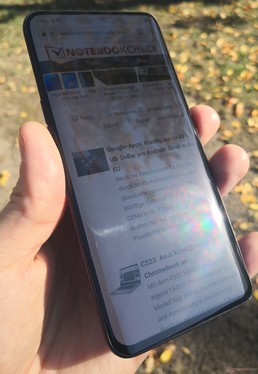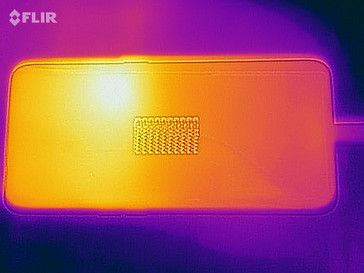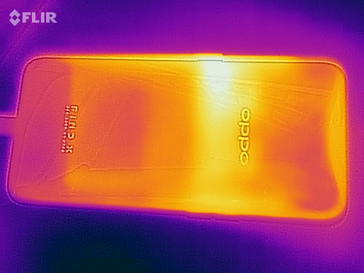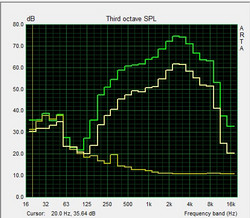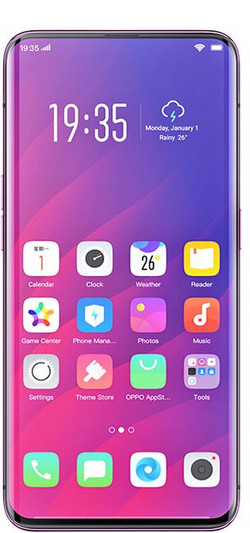Oppo Find X Smartphone Review
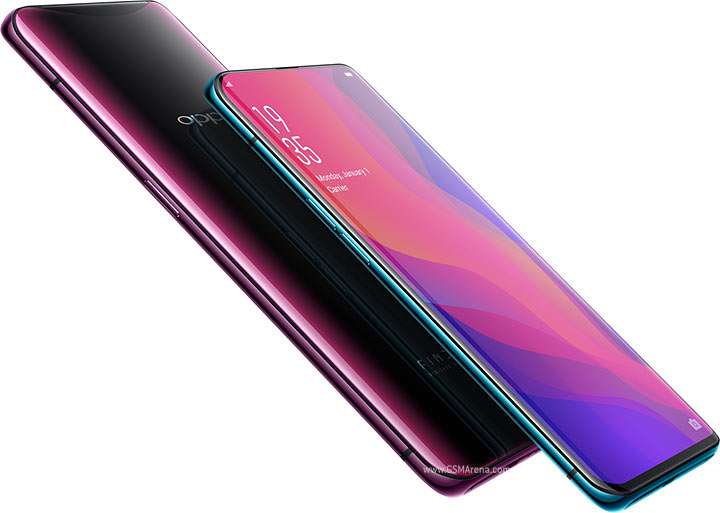
Oppo breaks new ground with the bezel-less Find X. Instead of a display notch, the Chinese manufacturer uses a motorized case section that pops up automatically from the top edge within half a second and slides back just as fast. Thanks to this slider technology, the sensors for face recognition and the front camera as well as the dual camera unit on the back are protected inside the case. In addition, this variable case module also allows maximum bezel reduction in the 6.4-inch display. The "chin," the bezel below the OLED panel, also turned out pleasantly thin in the Find X.
The high-end smartphone is run by Qualcomm's currently fastest SoC, the Snapdragon 845. The battery of the Find X has a capacity of 3730 mAh and can be recharged quickly via VOOC charge technology. In addition, the dual-SIM smartphone offers 8 GB of RAM and with up to 256 GB of internal storage, there should be sufficient space for personal files in the top model of the manufacturer. This model is available for about 1000 Euros (~$1139) in Europe, except for Germany. You can get a version with 128 GB of internal storage for about 650 Euros (~$740; $929 in the US) via import companies from the Far East.
The main competitor we selected is the also almost bezel-less Vivo Nex Ultimate, which has already fared well in our test. The phones of the current smartphone elite in Germany are listed as additional competitors of the Find X in our test: the Samsung Galaxy S9 Plus and the Huawei P20 Pro as well as the price-performance champion, the Xiaomi Mi 8.
Case - The Find X is a beauty
The Oppo flagship model is available in the two color combinations of blue/black (Glacier Blue) and red/black (Bordeaux Red). The color of the rounded black back gets lighter towards the edges using the corresponding color tones, which is very beautiful to look at. Thanks to the camera elements and sensors being hidden inside the case, the Find X looks puritan and "clean" in terms of its design.
In the front is the 6.4-inch display whose side edges are also rounded, similar to the Galaxy S series from Samsung. The bezels around the OLED panel, which are protected by Corning Gorilla Glass 5, are very small. At nearly 87%, almost the whole front of the Find X is taken up by the display, which makes it one of the most efficient display-to-surface ratios on the smartphone market.
The slimness of the metal frame and the slightly curved back allow the Find X to fit excellently into the hand. The case appears very high quality and ergonomic. The volume keys and the power button are easily reachable and have a comfortable pressure point. The keys sit tightly in the case. The Oppo Find X lacks an IP certification, consequently water and dust can get into the case.
Equipment - Limited for a 1000-Euro smartphone
While the equipment of the Find X includes 3D face recognition as well as wireless transfer of display contents to external monitors, the users of the Oppo smartphone have to make do without a notification LED, VoLTE, Wi-Fi calling, or a fingerprint sensor.
The internal UFS-2.1 storage of our test unit has a capacity of 128 GB, leaving about 110 GB still available to the user at the state of delivery. A microSD card is not supported in addition to the dual-SIM functionality.
The USB port is of Type-C, but it is only connected via USB-2.0 to charge the device. In addition, it supports USB-OTG, so that external storage or input media are recognized. Despite the glass back, wireless charging is not supported. Instead, Oppo bets on the VOOC charge technology as a quick-charge method to recharge the 3730-mAh battery via USB Type-C.
Software - The ColorOS in the Find X brings some limitations
For its system software, Oppo uses its in-house ColorOS user interface, which is based on the current Google Android version 8.1. Our test unit has the Chinese ROM version (model: PAFM00) and the Android security patches are dated August 2018.
Very little remains of the stock Android user interface. ColorOS version 5.1 is very colorful and offers many setting options. The installed apps are not presented in an App Drawer but spread over several Home screens. The system is fairly restrictive. For example, you can only use an alternative launcher via some detours (adb commands). Despite the ample size of the working memory, ColorOS only allows five active apps to run in the background.
The Chinese version of the Find X does not support Google services such as the Play Store or Google applications such as Gmail in the state of delivery. Instead, Chinese and Oppo's own services are used. Therefore, if you still want to use the Google services, you need to manually install them yourself.
Communication and GPS - No NFC in the Find X
In terms of its communication modules, Oppo is using version 5.0 of Bluetooth. The Find X does not support the option for Near Field Communication (NFC).
The integrated WLAN module of the Oppo smartphone masters the IEEE-802.11 standard according to a/b/g/n/ac and thus not only communicates in the 2.4-GHz but also in the 5-GHz frequency range as is customary in this price range. During everyday usage, the reception performance of the WLAN module is good and its signal is stable.
In close proximity to the router (Telekom Speedport, W921V) we measure a dampening of -37 dBm. In combination with our Linksys EA8500 reference router, the Find X achieves the very good transfer rates of 430 Mb/s and 510 Mb/s.
The Find X offers space for two nano-SIM cards. The dual-SIM smartphone can access the mobile Internet at up to 1.2 Gb/s (Cat 18) in the downloads. All the LTE frequencies that are relevant in Germany are supported. The built-in LTE modem offers access to 24 LTE bands, which really deserves the label "suitable for world travel."
| Networking | |
| iperf3 transmit AX12 | |
| Xiaomi Mi 8 Explorer Edition | |
| Vivo Nex Ultimate | |
| Samsung Galaxy S9 Plus | |
| Oppo Find X | |
| Huawei P20 Pro | |
| iperf3 receive AX12 | |
| Samsung Galaxy S9 Plus | |
| Huawei P20 Pro | |
| Xiaomi Mi 8 Explorer Edition | |
| Oppo Find X | |
| Vivo Nex Ultimate | |
The position of the Oppo smartphone can be located using the main satellite systems: GPS, GLONASS, and Beidou. Outdoors, the location is quickly determined with an accuracy of about 3 meters (~10 ft), and even indoors, the Find X succeeds quickly and accurately in determining the location.
In order to evaluate the locating accuracy of our test unit in practice, we record a route with the smartphone and the Garmin Edge 520 bicycle computer in parallel for comparison. Unfortunately, we were unable to get any location data from the Find X even after three attempts of repeating our GPS test, so we cannot give you a final verdict on the locating accuracy.
Telephone Functions and Voice Quality - In Germany only the Telekom SIM card can be used
The voice quality of the Find X is good and there was nothing unusual in the daily usage of the smartphone, at least when using a Telekom SIM card. However, the Oppo smartphone could neither connect to the mobile Internet in the D-net of Vodafone, nor the E-net of O2. Outside the Telekom net, we were only able to use the telephone function in our test.
There are no annoying drops or reception problems with the Find X. Voices are reproduced clearly. We feel that the quality of the built-in microphone is satisfactory, and the voice reproduction is characterized as "clear" by our conversation partner.
Cameras - Aperture in the Find X not very light sensitive
The main camera at the back of the Oppo smartphone has two lenses with an aperture of f/2.0 and an auto-focus with phase recognition. While the 16-MP main camera has a 4608x3456 pixel resolution in the 4:3 image format, the second camera sensor has a resolution of 20 MP. Thanks to this second lens, you can create Bokeh effects targeting specific background blurriness. In low light conditions, the camera unit in the back can be supported by an LED flash. Optical image stabilization (OIS) is also built-in.
The image quality is outstanding, at least with good lighting. The images can convince with their dynamic as well as their details. However, the auto-focus has some problems with fast movements. The colors captured are quite natural and the white balance makes the images appear warmer rather than cooler.
The Find X takes attractive pictures with little graininess and blurriness in situations with little surrounding light as well. However, if there is little light, the images turn out slightly dark.
The 25-MP camera in front can be considered a selfie specialist. While the pictures tend slightly towards overexposure, their quality is good to very good. We feel that the softening filter in the pictures is a bit annoying.
The front camera records videos at 1080p with up to 30 images per second, and the 16-MP camera on the back records videos in UHD resolution with up to 30 FPS.
Accessories and Warranty - 20-watt quick charger included by default
In addition to the smartphone itself, a USB cable, a protective plastic case, a USB-C-to-3.5-mm adapter, and a modular CN charger (4 A, 5 V) are included in the box.
TradingShenzhen has also added an EU adapter for the outlets used in this country; however, this is not part of the standard delivery, but a special service of the lender of our test unit.
The warranty is 24 months. With our test unit, that was lent to us by TradingShenzhen, there is the option to send the Find X to a German vendor address in case of a warranty claim, so we would not have to send it to China, which would be very time consuming. Please see our Guarantees, Return policies and Warranties FAQ for country-specific information.
Input Devices and Operation - Oppo smartphone with 3D face recognition
While the Find X does not have a fingerprint sensor, it is the first Oppo smartphone that offers biometric authentication via 3D face recognition. According to Oppo, this is supposed to analyze about 15,000 points of the face and with this be 20-times more secure than a fingerprint reader. The face recognition unlocks the Find X very quickly and accurately. The recognition rates are even able to convince in absolute darkness.
Navigation is done either with the three usual Android on-screen keys in the lower third of the display or alternatively via gestures, similar to the Xiaomi models. Inputs on the 6.41-inch display are registered quickly and accurately up to the corners of the touchscreen.
Oppo has selected the Sogou keyboard layout. Anyone who does not like this because of the Chinese characters can download another keyboard from the Play Store (in case they installed it).
Display - A high-contrast OLED panel
The OLED display offers a resolution of 2340x1080 pixels in 19.5:9 format with a 6.41-inch diagonal and a pixel density of about 400 PPI. Due to the high amount of pixels, the contents appear sharp, and readability of text is outstanding on the large screen. However, in the direct comparison to QHD panels, a difference in sharpness is noticeable.
At 432 cd/m², the maximum display brightness of the organic screen is not very high, but at 87%, the display brightness is even. Our more realistic APL50 measurement, which simulates an even distribution of light and dark areas on the OLED panel, results in a value of 428 cd/m².
In order to control the brightness, the Find X uses pulse width modulation (PWM) at a frequency of 227 Hz. Subjectively, we did not notice any annoying flickering, but PWM can create some problems such as headaches or dizziness in particularly sensitive users.
| |||||||||||||||||||||||||
Brightness Distribution: 87 %
Center on Battery: 427 cd/m²
Contrast: ∞:1 (Black: 0 cd/m²)
ΔE ColorChecker Calman: 5.37 | ∀{0.5-29.43 Ø4.78}
ΔE Greyscale Calman: 4 | ∀{0.09-98 Ø5}
146.5% sRGB (Calman 2D)
Gamma: 2.243
CCT: 6851 K
| Oppo Find X AMOLED, 2340x1080, 6.4" | Vivo Nex Ultimate Super AMOLED, 2316x1080, 6.6" | Xiaomi Mi 8 Explorer Edition Super AMOLED, 2248x1080, 6.2" | Samsung Galaxy S9 Plus Super AMOLED, 2960x1440, 6.2" | Huawei P20 Pro OLED, 2240x1080, 6.1" | |
|---|---|---|---|---|---|
| Screen | -28% | 14% | 37% | 47% | |
| Brightness middle (cd/m²) | 427 | 356 -17% | 429 0% | 565 32% | 569 33% |
| Brightness (cd/m²) | 432 | 352 -19% | 432 0% | 571 32% | 578 34% |
| Brightness Distribution (%) | 87 | 95 9% | 88 1% | 96 10% | 95 9% |
| Black Level * (cd/m²) | |||||
| Colorchecker dE 2000 * | 5.37 | 7.08 -32% | 3.39 37% | 2.3 57% | 1.3 76% |
| Colorchecker dE 2000 max. * | 7.51 | 14.1 -88% | 5.25 30% | 4.8 36% | 2.1 72% |
| Greyscale dE 2000 * | 4 | 4.7 -18% | 3.3 17% | 1.9 52% | 1.6 60% |
| Gamma | 2.243 98% | 2.096 105% | 2.238 98% | 2.16 102% | 2.31 95% |
| CCT | 6851 95% | 7297 89% | 7135 91% | 6332 103% | 6401 102% |
* ... smaller is better
Screen Flickering / PWM (Pulse-Width Modulation)
| Screen flickering / PWM detected | 227 Hz | ||
The display backlight flickers at 227 Hz (worst case, e.g., utilizing PWM) . The frequency of 227 Hz is relatively low, so sensitive users will likely notice flickering and experience eyestrain at the stated brightness setting and below. In comparison: 53 % of all tested devices do not use PWM to dim the display. If PWM was detected, an average of 8108 (minimum: 5 - maximum: 343500) Hz was measured. | |||
Due to their technology, OLED displays have a clear advantage compared to IPS panels, since the organic displays can reproduce an "absolute" black even in a completely dark room and at maximum brightness, with the contrast ratio in theory tending towards infinite.
The analysis of the photo spectrometer and the CalMAN software results in relatively low average Delta-E deviations to the sRGB color space for the Find X with 5.4 (colors) and 4 (Grayscale) and the ideal range being values <3. At 6851 K, the color temperature is only slightly elevated compared to the ideal value of 6500 K. The sRGB color space is covered completely by the OLED panel, and we do not really see any tint.
Display Response Times
| ↔ Response Time Black to White | ||
|---|---|---|
| 6 ms ... rise ↗ and fall ↘ combined | ↗ 3 ms rise | |
| ↘ 3 ms fall | ||
| The screen shows very fast response rates in our tests and should be very well suited for fast-paced gaming. In comparison, all tested devices range from 0.1 (minimum) to 240 (maximum) ms. » 17 % of all devices are better. This means that the measured response time is better than the average of all tested devices (20.2 ms). | ||
| ↔ Response Time 50% Grey to 80% Grey | ||
| 8 ms ... rise ↗ and fall ↘ combined | ↗ 5 ms rise | |
| ↘ 3 ms fall | ||
| The screen shows fast response rates in our tests and should be suited for gaming. In comparison, all tested devices range from 0.165 (minimum) to 636 (maximum) ms. » 19 % of all devices are better. This means that the measured response time is better than the average of all tested devices (31.6 ms). | ||
Performance - Snapdragon 845 and very good system performance
Inside the Oppo smartphone, the Qualcomm Snapdragon 845 provides ample performance. This SoC for high-end smartphones of the year 2018 integrates four performance cores that are based on the ARM-Cortex-A75 architecture with up to 2.8 GHz as well as four power saving cores that are based on the ARM-Cortex-A55 architecture with up to 1.8 GHz clock speed. The graphics unit built into the Qualcomm SoC is also powerful, an Adreno 630.
In combination with 8 GB of RAM, the high-end processor ensures very good system performance. The application load times are also very short. In our benchmark battery, the Oppo high-end smartphone places at the top end. Together with the Xiaomi Mi 8 it forms the very top in the AnTuTu benchmarks. The Find X also proves its outstanding mastery in the system benchmarks and leaves the competition in the dust with 13,000 points in the PCMark benchmark. However, the recent information regarding a dynamic performance adjustment of the Find X in the benchmarks – similar to what other manufacturers do – should be considered and the smartphone should be judged accordingly.
| AnTuTu v7 - Total Score (sort by value) | |
| Oppo Find X | |
| Vivo Nex Ultimate | |
| Xiaomi Mi 8 Explorer Edition | |
| Samsung Galaxy S9 Plus | |
| Huawei P20 Pro | |
| Average Qualcomm Snapdragon 845 (246366 - 299878, n=27) | |
While surfing with the Chrome browser, you do not need to worry about a lack of speed, even if the Find X ends up more in the middle of the field in all the benchmarks. In practice, the Oppo smartphone can score with a high speed while surfing. Demanding sites are loaded quickly and without errors.
| JetStream 1.1 - Total Score | |
| Xiaomi Mi 8 Explorer Edition (Chrome 69) | |
| Average Qualcomm Snapdragon 845 (22.5 - 90.9, n=25) | |
| Samsung Galaxy S9 Plus (Samsung Browser 7.0) | |
| Oppo Find X (Chrome 69) | |
| Huawei P20 Pro (Chrome 65) | |
| Vivo Nex Ultimate (Chrome 67) | |
| Octane V2 - Total Score | |
| Average of class Smartphone (2228 - 121337, n=197, last 2 years) | |
| Average Qualcomm Snapdragon 845 (3991 - 18275, n=28) | |
| Samsung Galaxy S9 Plus (Samsung Browser 7.0) | |
| Xiaomi Mi 8 Explorer Edition (Chrome 69) | |
| Oppo Find X (Chrome 69) | |
| Huawei P20 Pro (Chrome 65) | |
| Vivo Nex Ultimate (Chrome 67) | |
| Mozilla Kraken 1.1 - Total | |
| Vivo Nex Ultimate (Chrome 67) | |
| Huawei P20 Pro (Chrome 65) | |
| Oppo Find X (Chrome 69) | |
| Average Qualcomm Snapdragon 845 (2154 - 11204, n=28) | |
| Xiaomi Mi 8 Explorer Edition (Chrome 69) | |
| Samsung Galaxy S9 Plus (Samsung Browser 7.0) | |
| Average of class Smartphone (257 - 28190, n=154, last 2 years) | |
* ... smaller is better
When reading or writing to the internal UFS storage, the Oppo smartphone does not establish any new records, and the access rates are on the level of current high-end smartphones from other manufacturers.
| Oppo Find X | Vivo Nex Ultimate | Xiaomi Mi 8 Explorer Edition | Samsung Galaxy S9 Plus | Huawei P20 Pro | Average 128 GB UFS 2.1 Flash | Average of class Smartphone | |
|---|---|---|---|---|---|---|---|
| AndroBench 3-5 | -8% | -8% | -5% | 125% | 108% | 562% | |
| Sequential Read 256KB (MB/s) | 761 | 687 -10% | 692 -9% | 819 8% | 832 9% | 761 ? 0% | 2228 ? 193% |
| Sequential Write 256KB (MB/s) | 206.9 | 228.4 10% | 205.2 -1% | 204.9 -1% | 196.7 -5% | 296 ? 43% | 1852 ? 795% |
| Random Read 4KB (MB/s) | 145.9 | 126.7 -13% | 135.2 -7% | 129.7 -11% | 144.3 -1% | 154 ? 6% | 296 ? 103% |
| Random Write 4KB (MB/s) | 26.98 | 22.1 -18% | 22.65 -16% | 22.74 -16% | 160.5 495% | 130.4 ? 383% | 339 ? 1156% |
| Sequential Read 256KB SDCard (MB/s) | 79.2 ? | 76 ? | |||||
| Sequential Write 256KB SDCard (MB/s) | 67.2 ? | 59.6 ? |
Games - The Adreno 630 GPU ensures gaming enjoyment
The Adreno 630 GPU integrated in the Qualcomm SoC supports all the modern APIs such as Vulkan, OpenGL, and Direct3D 12. The powerful graphics card in the Find X allows playing even more demanding 3D games from the Android Play Store without any stutters. With the GPU, current games such as "Asphalt 9" are played in high graphic settings at a relatively constant 30 FPS.
Emissions - Surface temperatures pose no problems
Temperature
The front of the Oppo smartphone warms up quite unevenly under load. While we measure 41.6 °C (~107 °F) in the upper areas, the lower third of the front shows maximum surface temperatures of 36 °C (~97 °F). Thanks to the fairly cool back of the phone, the temperatures developing under load are not interfering with everyday operation.
(±) The maximum temperature on the upper side is 41.6 °C / 107 F, compared to the average of 35.2 °C / 95 F, ranging from 21.9 to 247 °C for the class Smartphone.
(+) The bottom heats up to a maximum of 36.8 °C / 98 F, compared to the average of 34 °C / 93 F
(+) In idle usage, the average temperature for the upper side is 25 °C / 77 F, compared to the device average of 32.9 °C / 91 F.
Speaker
There is a mono speaker at the bottom edge of the Find X smartphone. At almost 82 dB(A), this is sufficiently loud, but its quality is only convincing to a limited extent. Bass sounds cannot be heard, and the mids and highs are also not really reproduced in a linear fashion. However, the quality of the mono speaker is sufficient for playing short videos.
Music lovers can use the sound output of the USB Type-C connection, which sounds good and is sufficiently loud.
Oppo Find X audio analysis
(±) | speaker loudness is average but good (81.5 dB)
Bass 100 - 315 Hz
(-) | nearly no bass - on average 63.3% lower than median
(+) | bass is linear (0% delta to prev. frequency)
Mids 400 - 2000 Hz
(-) | nearly no mids - on average 63.3% lower than median
(+) | mids are linear (0% delta to prev. frequency)
Highs 2 - 16 kHz
(-) | nearly no highs - on average 63.3% lower than median
(+) | highs are linear (0% delta to prev. frequency)
Overall 100 - 16.000 Hz
(-) | overall sound is not linear (116.9% difference to median)
Compared to same class
» 87% of all tested devices in this class were better, 6% similar, 6% worse
» The best had a delta of 11%, average was 35%, worst was 134%
Compared to all devices tested
» 96% of all tested devices were better, 2% similar, 2% worse
» The best had a delta of 4%, average was 24%, worst was 134%
Vivo Nex Ultimate audio analysis
(+) | speakers can play relatively loud (82.5 dB)
Bass 100 - 315 Hz
(-) | nearly no bass - on average 65.5% lower than median
(+) | bass is linear (0% delta to prev. frequency)
Mids 400 - 2000 Hz
(-) | nearly no mids - on average 65.5% lower than median
(+) | mids are linear (0% delta to prev. frequency)
Highs 2 - 16 kHz
(-) | nearly no highs - on average 65.5% lower than median
(+) | highs are linear (0% delta to prev. frequency)
Overall 100 - 16.000 Hz
(-) | overall sound is not linear (115% difference to median)
Compared to same class
» 87% of all tested devices in this class were better, 4% similar, 9% worse
» The best had a delta of 11%, average was 35%, worst was 134%
Compared to all devices tested
» 96% of all tested devices were better, 1% similar, 3% worse
» The best had a delta of 4%, average was 24%, worst was 134%
Battery Life - The Find X lasts for a while
Power Consumption - Oppo smartphone with slightly high consumption
While the Find X is not very efficient in terms of its power usage, considering it is a 6.4-inch smartphone, the power consumption of the Oppo smartphone is acceptable.
| Off / Standby | |
| Idle | |
| Load |
|
Key:
min: | |
| Oppo Find X 3730 mAh | Vivo Nex Ultimate 4000 mAh | Xiaomi Mi 8 Explorer Edition 3000 mAh | Samsung Galaxy S9 Plus 3500 mAh | Huawei P20 Pro 4000 mAh | Average Qualcomm Snapdragon 845 | Average of class Smartphone | |
|---|---|---|---|---|---|---|---|
| Power Consumption | 30% | -27% | 45% | 44% | 18% | 15% | |
| Idle Minimum * (Watt) | 0.9 | 0.9 -0% | 1.8 -100% | 0.68 24% | 0.84 7% | 0.862 ? 4% | 0.842 ? 6% |
| Idle Average * (Watt) | 1.9 | 1.5 21% | 2.9 -53% | 0.95 50% | 1.54 19% | 1.728 ? 9% | 1.439 ? 24% |
| Idle Maximum * (Watt) | 3.2 | 1.7 47% | 3.5 -9% | 1.09 66% | 1.57 51% | 2.07 ? 35% | 1.624 ? 49% |
| Load Average * (Watt) | 7.1 | 3.7 48% | 4.8 32% | 4.58 35% | 2.47 65% | 4.87 ? 31% | 7.03 ? 1% |
| Load Maximum * (Watt) | 10.7 | 7.2 33% | 11.2 -5% | 5.16 52% | 2.49 77% | 9.27 ? 13% | 11.3 ? -6% |
* ... smaller is better
Battery Life
In our WLAN test with an adjusted display brightness of 150 cd/m², the 3730-mAh battery lasts for about 10 hours. With the included 20-watt charger, it takes only 1.5 hours to fully recharge the empty battery, thanks to the VOOC quick-charge technology.
| Oppo Find X 3730 mAh | Vivo Nex Ultimate 4000 mAh | Xiaomi Mi 8 Explorer Edition 3000 mAh | Samsung Galaxy S9 Plus 3500 mAh | Huawei P20 Pro 4000 mAh | |
|---|---|---|---|---|---|
| Battery runtime | |||||
| WiFi v1.3 (h) | 9.9 | 17.1 73% | 11.6 17% | 8.7 -12% | 12.4 25% |
Pros
Cons
Verdict - Oppo smartphone with great hardware and software that takes some getting used to
The Oppo Find X is one of the most beautiful smartphones of the year. Thanks to the slider technology, all the camera modules and sensors are hidden, causing the smartphone to appear clean and timeless. The workmanship and haptics of the case are also excellent. The built-in cameras, the battery, and the system performance of the Snapdragon 845 in combination with 8 GB of RAM show no weaknesses. We merely have some complaints about its sparse features in terms of hardware at a price between about 650 and 1000 Euros (~$739-1137). In the times of Google Pay, there should have been at least an NFC chip.
While the motorized slider technology is unlikely to own the future, it solves the current notch problems very well.
The main problem of the Find X is the software. The in-house ColorOS could not be more restrictive, which often leads to problems in everyday usage scenarios. For example, push notifications were not always received in a timely manner during the test (despite the corresponding settings), using mobile data was only possible in the Telekom net, and we could only access alternative launchers via some detours. In addition, the system only allows a maximum of five constantly activated apps – and that even though it has 8 GB of working memory.
The current software problems lead us to deduct one percentage point from the overall evaluation.
Oppo Find X
- 10/22/2018 v6 (old)
Marcus Herbrich




